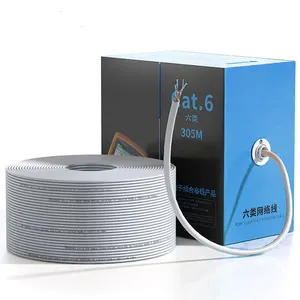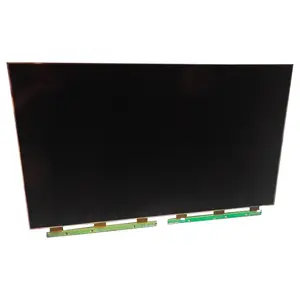Popular in your industry











































































Top categories
About 1550nm optical transmitter price
Understanding 1550nm Optical Transmitter Pricing
Fiber optic systems rely on optical transmitters to transform electrical signals into optical ones, a process essential for the efficient and reliable transmission of data, voice, and video across vast distances. These devices are employed in an array of settings, from telecommunication networks to broadcast systems, and are compatible with various optical fiber types, including single-mode and multi-mode. Optical transmitters harness the power of lasers or LEDs to generate light signals, which are then modulated to convey information.
For entities engaged in long-distance communication or data transmission via fiber optics, such as ISPs, telecom firms, and cable TV operators, optical transmitters are indispensable. Their pricing is shaped by multiple factors, encompassing the transmitter's model, its power output, the employed modulation technique, and the supported interfaces.
At their essence, optical transmitters convert electrical signals into their optical counterparts. This is achieved through a light source, like a laser or LED, which emits light at a precise wavelength. The device also includes electronic components that modulate the light to encode the data from the electrical signal into light pulses, which are then conveyed through the fiber optic cable to a receiver that decodes the light back into electrical signals.
The term "1550nm pricing" specifically denotes the cost of transmitters that function at the 1550nm wavelength, favored for long-distance, high-capacity communications due to its low attenuation properties, which are ideal for spanning cities or connecting disparate geographical areas.
Optical Transmitter 1550nm Pricing
Optical transmitters are pivotal in establishing fiber optic networks, tasked with the conversion of electrical signals into optical ones for transmission through fiber optic cables.
The cost of these transmitters is subject to variation based on attributes such as power output, range, and the specific fiber type they are engineered for. Below are some prevalent categories:
-
Low Power Transmitters: Suited for short-distance uses, these transmitters have a modest power output and are apt for internal building links and local networks.
-
Medium Power Transmitters: These transmitters boast a greater power output than their low-power counterparts, enabling them to cover extended distances, making them suitable for regional or city-to-city networks.
-
High Power Transmitters: Designed for long-haul transmission, high power transmitters are adept at overcoming significant fiber attenuation and are perfect for ensuring high-quality signals over great distances.
-
Coaxial Transmitters: Although not exclusive to fiber optics, coaxial transmitters are integral to hybrid systems that merge fiber optic and coaxial technologies, commonly found in cable TV and broadband internet frameworks.
Selecting the Right 1550nm Optical Transmitter
Choosing an optical transmitter for commercial use demands consideration of several factors that influence both performance and cost-efficiency.
Begin by determining the transmission distance your application requires. This will guide you in deciding whether a short-range transmitter for local networks or a long-range one for telecommunication services is necessary.
Next, assess the diversity of fiber types in your network setup. Different scenarios may necessitate specialized transmitters that are optimized for single-mode or multi-mode fibers.
Also, evaluate the transmitter's compatibility with your existing infrastructure, ensuring it aligns with the operational wavelength range and modulation formats of your current network.
Finally, account for environmental conditions such as temperature fluctuations or exposure to elements like moisture or dust that could impact the transmitter's longevity and functionality.
About 1550nm Optical Transmitter Pricing on Alibaba.com
Alibaba.com distinguishes itself as a premier global marketplace that connects businesses with an extensive array of optical transmitters tailored for diverse applications. With a track record spanning over twenty years in facilitating B2B transactions across sectors like telecommunications, networking, and industrial automation, Alibaba.com has become an indispensable resource for firms seeking optical equipment.
The platform presents a wide selection of offerings from suppliers around the globe, granting businesses the flexibility to locate products that satisfy their precise needs without compromising quality. Alibaba.com also eases the complexities of international commerce by providing services such as Trade Assurance, which secures payments until order fulfillment—offering buyers confidence when procuring essential components like optical transmitters.
Alibaba.com's inventory spans a wide wavelength range from 850nm to 1550nm, enabling companies to deploy tailored solutions that address their specific operational demands. With user-friendly features for seamless navigation on desktop and mobile devices, as well as support for various local languages, Alibaba.com streamlines the procurement process, positioning itself not merely as a marketplace but as a committed ally to the growth of small and medium-sized enterprises globally.
Frequently Asked Questions on 1550nm Optical Transmitter Pricing
What is the fundamental role of an optical transmitter?
An optical transmitter's primary role is to convert electrical signals into light signals for transmission over optical fibers or through the air (Free Space Optics, or FSO), facilitating swift data transfer within telecommunication networks.
How does an optical transmitter function?
An optical transmitter encodes an electrical signal into a light signal at a designated wavelength, which is then sent through the optical fiber. The modulation technique employed dictates the nature of the transmitted signal.
What are the principal factors to consider when choosing an optical transmitter?
When selecting an optical transmitter, consider the fiber network type (single-mode or multi-mode), system compatibility, data rate needs, and the transmission distance the signal must cover.
How do single-mode and multi-mode optical transmitters differ?
Single-mode transmitters are engineered for transmitting signals over long distances in a single mode, whereas multi-mode transmitters are capable of sending signals in various modes, making them more suitable for shorter to medium-range uses.
Are optical transmitters capable of handling both analog and digital signals?
Optical transmitters are versatile enough to manage both analog and digital signals, though the choice between an analog or digital transmitter will hinge on the specific signal types the system requires.
In the context of optical transmitters, what does 'data rate' signify?
The data rate indicates the velocity at which data is conveyed across a network, typically measured in bits per second (bps), and it determines the volume of information that can be transmitted within a set timeframe.
How can I ascertain if an optical transmitter is compatible with my network?
To ensure compatibility, verify the transmitter's specifications, such as the signal type (analog or digital), data rate, wavelength, and interface type, against the requirements of your network.
What interfaces are commonly associated with optical transmitters?
Optical transmitters often come with interfaces like RS-232, Ethernet, USB, and HDMI. The selection depends on your connectivity requirements, including data transfer rates and system integration.
What environmental conditions should optical transmitters be safeguarded against?
It's crucial to protect optical transmitters from dust, moisture, and extreme temperatures. Protective enclosures or specially designed housings are available to shield them in such environments.
Before making a purchase, how do I verify the quality of an optical transmitter?
Seek out certifications or compliance with industry standards as indicators of quality assurance. Additionally, opt for reputable suppliers who offer comprehensive product details and transparent pricing.
What purpose does a wavelength-specific transmitter serve in optical communication?
A wavelength-specific transmitter emits light at a certain wavelength (or range of wavelengths) tailored to the requirements of your communication system, ensuring efficient signal transmission.
Is it possible to customize an optical transmitter to meet the specific needs of my business?
Many suppliers provide customization options for optical transmitters, allowing for specific wavelengths, integration features, or housing designs to fulfill unique business requirements.






















